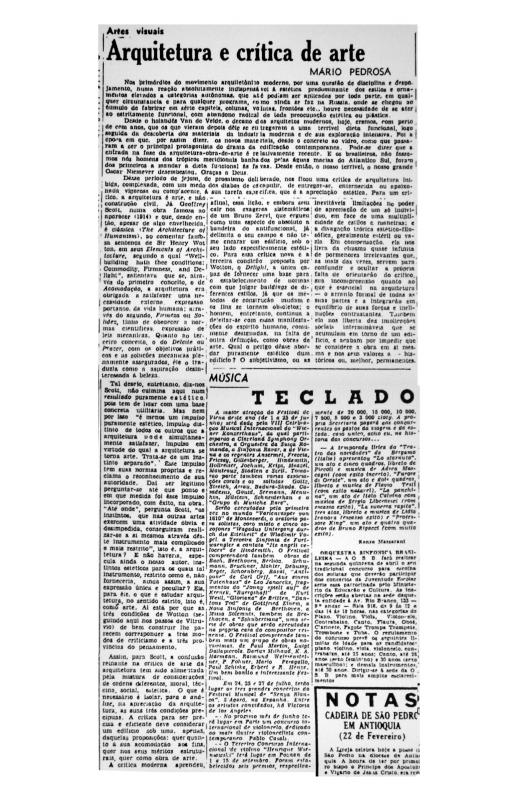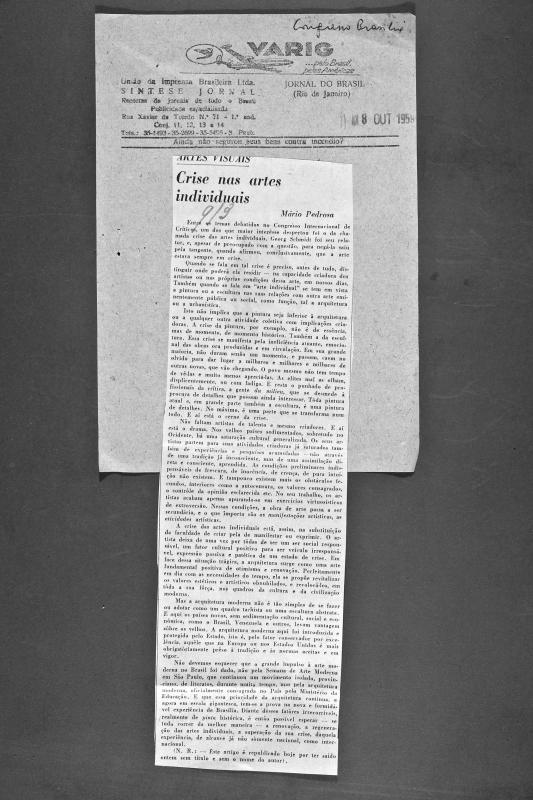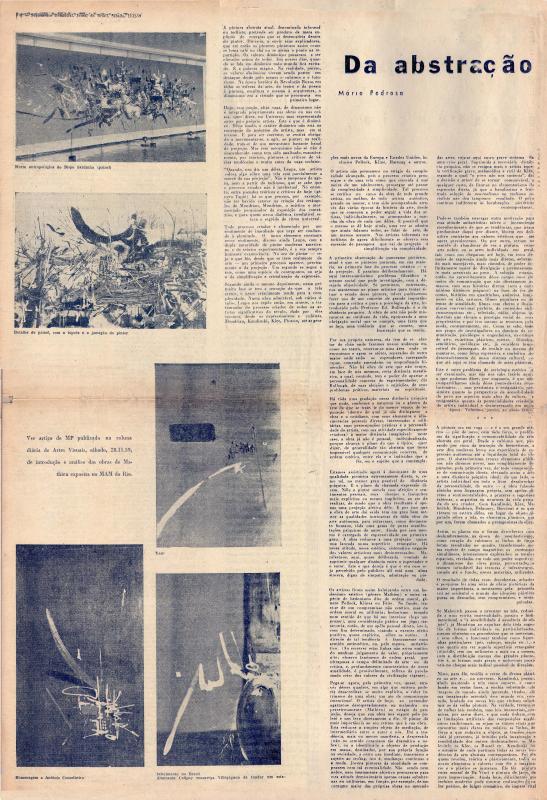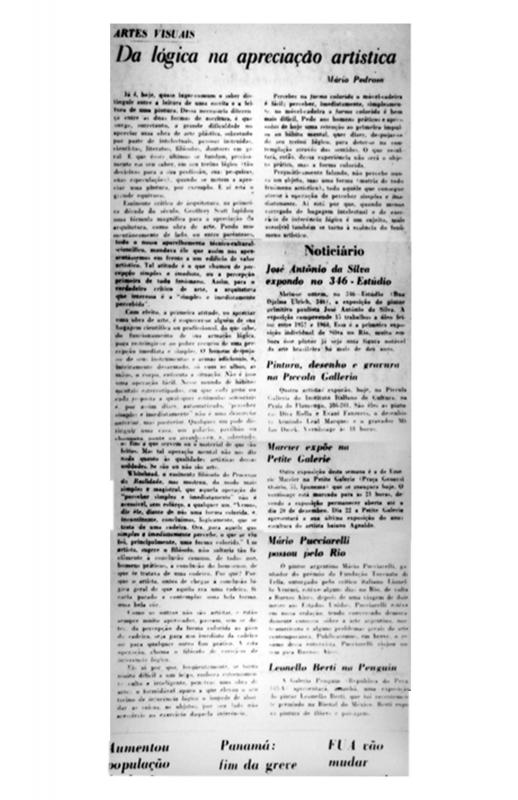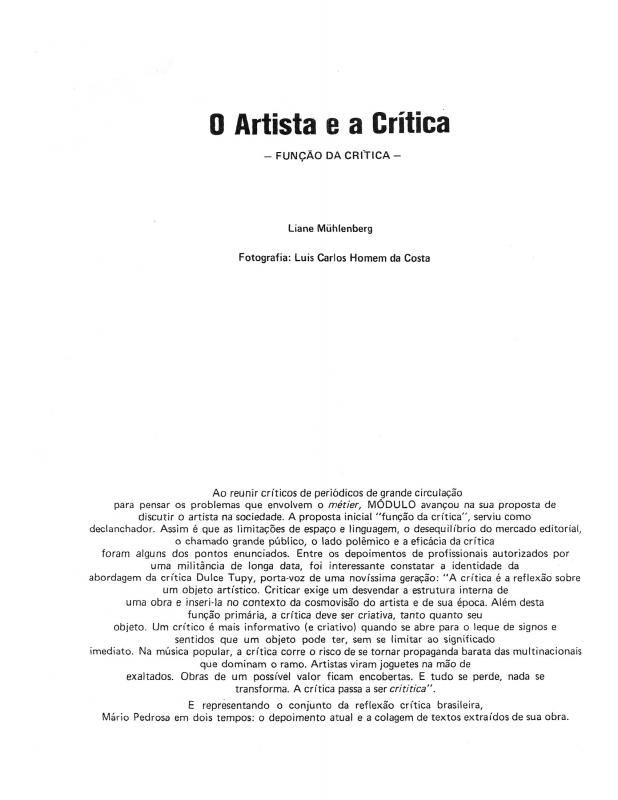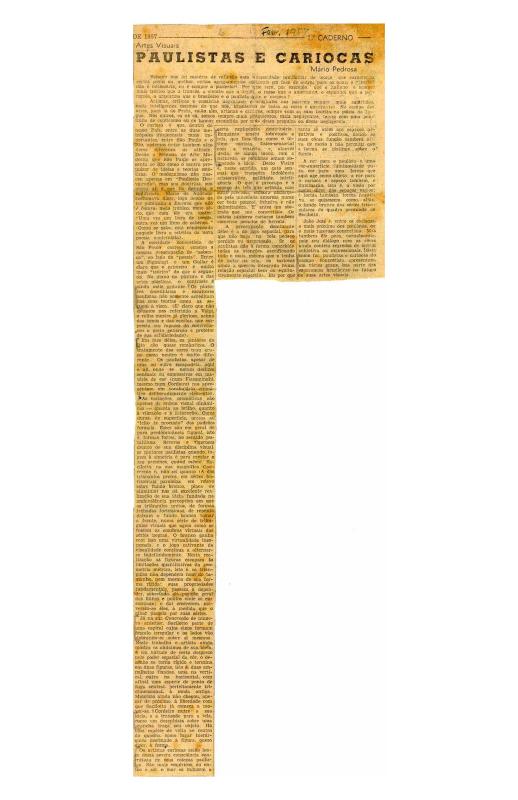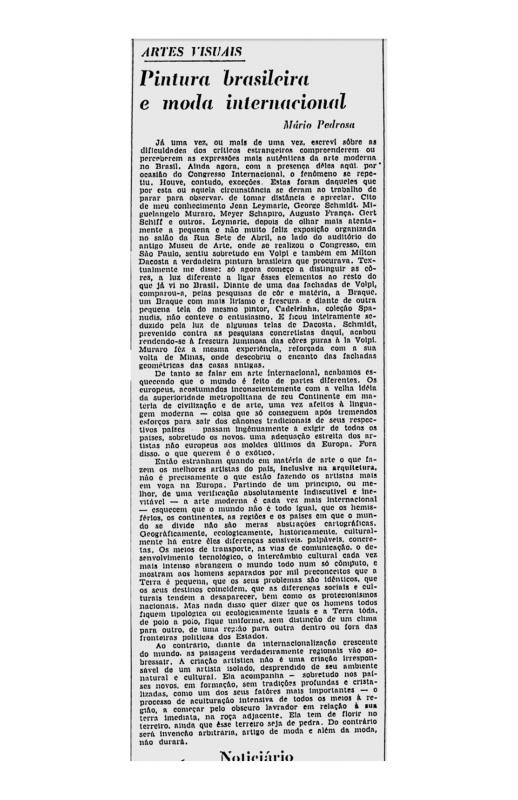In this text Mário Pedrosa mentions “post-modernism” for the first time; although his text does not refer to an exhibition, it traces the recent developments in Hélio Oiticica’s work, which moves from form to environmental proposals.
Oiticica arose on the arts scene in Rio de Janeiro in the 1950s in the context of Grupo Frente (led by Ivan Serpa) and Concrete art (led by Waldemar Cordeiro since 1952). He participated in the neo-Concrete movement (although not from its beginning, as he is not named in its 1959 manifesto) and, during the 1960s, he was a leader in Brazilian experimental art, distinguishing himself in the Nova Objetvidade Brasileira exhibition (1967). Beyond his artistic proposals, Oiticica made contributions to art criticism in Brazil, both for the content of his texts (which was at times theoretical) and for his unique writing style. During the 1970s, he lived in the United States—after having participated in the Information exhibition (MoMA, 1970)—returning to Brazil in 1980 where he would die just months later. His legacy is one of inexhaustible, exemplary, and radical commitment to experimentation.
Mário Pedrosa (1900–81) was an intellectual and politician, and undoubtedly the key theoretician and critic on Brazilian art of the 20th century. He began as an international politics correspondent for the Diário da Noite, and beginning in the 1920s he was affiliated with the PCB (Communist Party of Brazil). He was imprisoned in 1932 because of his political militancy (Trotskyism). During the Estado Novo of Getúlio Vargas, he lived in exile in France and New York, and only returned to Brazil after the Second World War, when he worked for the Correio da Manhã. His stance against Stalinism led him to found the Vanguarda Socialista, a weekly publication. He presented a thesis on aesthetics called “Da natureza afetiva da forma na obra de arte” (1949) at the School of Architecture (Rio) that made use of his philosophical background, and his knowledge of Gestalt psychology; during that time he was also one of the founders of the AICA (1948) and also organized the International Conference of Art Critics (Brasilia, 1959). He wrote an arts column for the Tribuna da Imprensa (1950–54) and was an organizing member of the II and III São Paulo Biennials (1953 and 1955), later becoming director of the MAM-SP (1961–63). He served as secretary for the National Council of Culture during the brief government of Jânio Quadros. During the military dictatorship he took refuge in Chile, where he became director of the Museo de la Solidaridad in Santiago; after the Pinochet coup (1973), he left for Havana, where he served as secretary for the Museo de la Resistencia Salvador Allende. He only returned to Brazil in 1977 (at the beginning of the amnesty) and was the first to sign the manifesto creating the PT (Party of Workers, 1980). His vast library (which included eight thousand volumes) is partially available at the national library in Rio de Janeiro.
[As complementary reading, see the following texts by Mário Pedrosa in the ICAA digital archive: “Abstração ou figuração ou realismo?” (doc. no. 1085648); “Arquitetura e crítica de arte” (doc. no. 1086553); “Crise nas artes individuais” (doc. no. 1110406); “Da abstração a auto-expressão” (doc. no. 1085707); “Da lógica na apreciação artística” (doc. no. 1086587); “Debate: o artista e a crítica” (doc. no. 1110951); “Lições do Congresso de Críticos” (doc. no. 1110410); “Paulistas e cariocas” (doc. no. 1085056); “Pintura brasileira e moda internacional” (doc. no. 1126469); and “Problemas da pintura brasileira” (doc. no. 1075171)].

